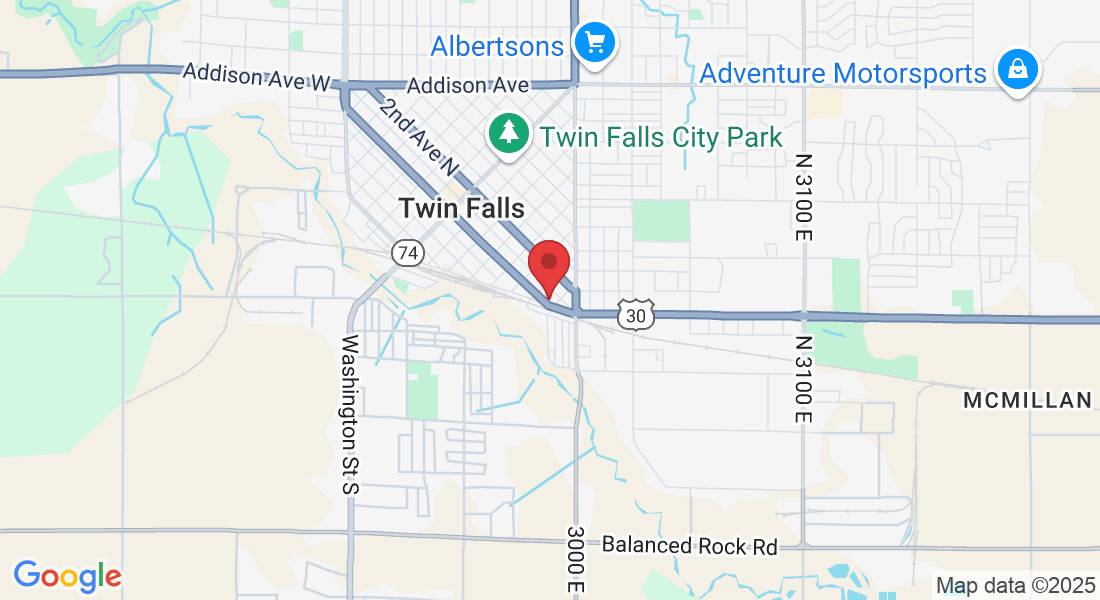OUR SERVICES
Magic Valley | Pocatello | Twin Falls | Mountain Home | Burley | Jerome | Rupert | Hailey | Gooding | Ketchum | Wendell | Bellevue | Shoshone | Glenns Ferry | Fairfield
At Orr Floor Care, we take pride in delivering high-quality flooring solutions and maintenance services throughout Twin Falls, ID, and beyond. From concrete polishing to epoxy installations, our goal is to enhance the durability, aesthetics, and value of your space. Explore our range of services below to find the right solution for your home or business.
EPOXY FLOORING
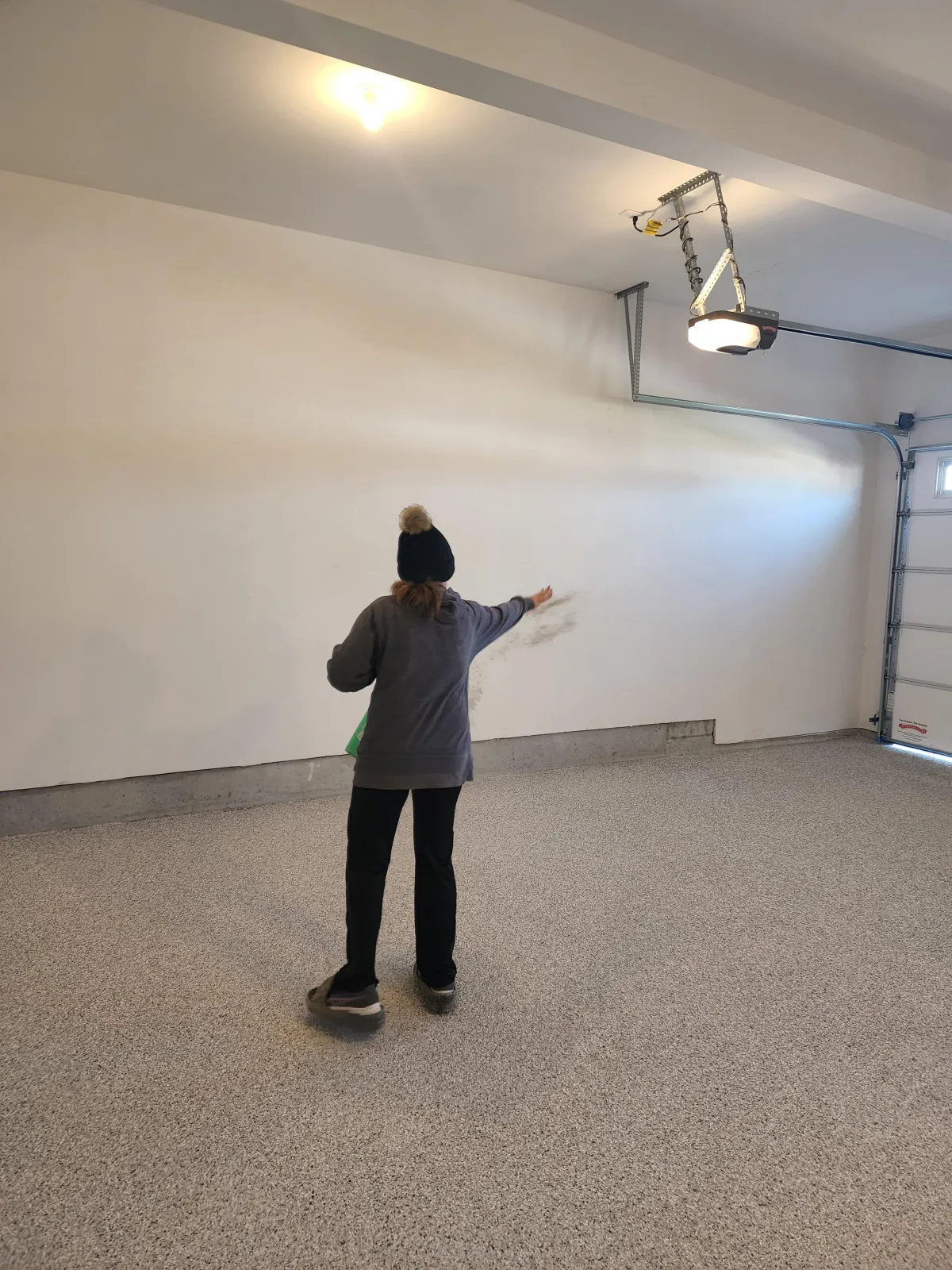
Seamless, Durable & Visually Versatile
Epoxy flooring is a popular choice for homeowners and businesses looking for a clean, modern look with top-tier durability. We offer a variety of epoxy systems—including flake, metallic, and quartz—to deliver a finish that matches your unique style and stands up to the demands of daily use.
Why You Want It
Wide Range of Styles:
Choose from decorative flake, pearlescent metallics, quartz blends, and solid-color epoxies for a truly custom appearance
Resistant to Stains & Abrasion:
Epoxy floors protect against oil spills, chemical exposure, and heavy foot or vehicle traffic
Easy to Clean:
Most spills wipe away effortlessly, and dust won’t linger on the smooth surface
Fast Installation & Quick Cure:
Our professional team can often complete installations in just a few days, minimizing downtime.
How long does epoxy flooring last?
Epoxy flooring can last anywhere from 5 to 15 years (or more) depending on factors like the quality of the epoxy used, the skill of the installation, and the level of traffic and wear. In residential garages with moderate use, it may last closer to 10–15 years, while high-traffic commercial environments might see a shorter lifespan. Proper cleaning routines—such as regular sweeping and occasional mopping—significantly extend the life of epoxy floors. Additionally, choosing a reputable installer who follows proper surface preparation protocols (including thorough cleaning, crack repair, and using high-quality primers) is crucial. This ensures a stronger bond between the epoxy and your concrete substrate, leading to better durability and a longer lifespan overall.
What are the different types of epoxy flooring systems available?
There are several types of epoxy systems, each tailored to different aesthetic preferences and functional needs. A solid-color epoxy provides a clean, uniform look and is often used in industrial settings. A flake epoxy system includes decorative vinyl or mica flakes, adding texture and slip resistance—a popular choice for garages and commercial spaces. Metallic epoxy creates a shimmering, pearlescent effect ideal for upscale residential or commercial interiors. Quartz-filled epoxy incorporates small quartz granules for a highly slip-resistant, durable finish often used in commercial kitchens or healthcare facilities. Selecting the right system depends on factors such as foot or vehicle traffic, environmental conditions, and desired aesthetic.
How do I maintain an epoxy floor to keep it looking like new?
Maintenance involves a few simple steps. First, daily or weekly sweeping (or dry mopping) helps remove dirt and debris that could scratch the surface. For deeper cleaning, a mild degreaser or pH-neutral floor cleaner mixed with warm water works well. Avoid using harsh chemicals or abrasive scrubbing pads that could dull the finish. Promptly wipe up spills—especially solvents, oils, or chemical leaks—to prevent staining. Lastly, using felt pads under furniture legs or heavy equipment can protect the coating from scratches. With this basic routine, epoxy floors remain vibrant and glossy for years.
Can epoxy floors be used outdoors?
Epoxy flooring is generally best suited for interior or covered areas. While there are specialized outdoor epoxy blends, standard epoxy can degrade under prolonged UV exposure, causing discoloration or a chalky appearance. If you require an outdoor coating, a polyaspartic or polyurethane topcoat could be considered, as these are often more UV-stable. However, many property owners still prefer stamped concrete or other specialized outdoor coatings that are formulated for direct weather exposure. Always discuss your specific needs with your installer to determine the best material for outdoor applications.
Are epoxy floors slippery, and can I add anti-slip properties?
Epoxy floors can become slippery, especially when wet, because of their smooth finish. However, slip resistance can be significantly improved by adding textured flakes or anti-slip additives (like aluminum oxide, quartz, or silica sand) during installation. Areas prone to moisture—such as pool decks, locker rooms, or entryways—benefit greatly from these additives. This extra texture doesn’t compromise the sleek appearance of epoxy and enhances overall safety, making it a common choice for commercial applications that need to meet certain safety standards.
How long does it take to install epoxy flooring, and when can I walk on it?
The installation timeline varies based on factors like the size of the area, the level of surface preparation required, the type of epoxy system, and ambient temperature. In many cases, a basic garage floor can be completed within 1–2 days, with an additional day or two for curing before light foot traffic is allowed. Heavier items, such as vehicles or commercial equipment, typically require 5–7 days of curing time. More complex systems (like metallic epoxy or multi-coat quartz) can add an extra day or two to the process. Always follow your installer’s specific cure-time recommendations to ensure a long-lasting finish.
What kind of surface preparation is necessary before applying epoxy?
Surface prep is the most critical step in ensuring adhesion and longevity. The concrete surface needs to be clean, dry, and free of any contaminants like oil, grease, or old coatings. Technicians often use methods like diamond grinding or shot blasting to open the concrete’s pores. This process removes the surface’s “latency” (weak top layer), creating a roughened texture that the epoxy can bond to. Cracks or existing damage may require patching or filling. Skipping or skimping on proper surface prep is the most common reason epoxy floors fail prematurely, so it’s essential to entrust this step to an experienced professional.
Does epoxy emit strong odors or VOCs during installation?
Some epoxy products can emit noticeable odors during installation, though many modern, high-quality epoxies are low-VOC or even VOC-free, significantly reducing unpleasant smells. Good ventilation—such as opening windows or using exhaust fans—helps disperse any fumes. Once cured, epoxy flooring is inert and doesn’t continue to release volatile organic compounds. If you’re particularly sensitive to chemicals, discuss low-odor or zero-VOC epoxy options with your installer before work begins to ensure a comfortable installation experience.
Can epoxy flooring be repaired if it gets damaged?
Yes, epoxy flooring can often be repaired if the damage is localized—such as a small chip or gouge. The repair process generally involves lightly sanding the damaged area, applying a matching epoxy patch or filler, and then sealing it to blend with the surrounding floor. However, color matching can be challenging, especially with patterned or metallic epoxies. For more extensive or widespread damage, it may be more cost-effective to recoat or refinish the entire floor. Regular maintenance and avoiding heavy impact or dragging sharp objects can prevent many common forms of damage.
How does epoxy compare to other flooring systems like polished concrete or vinyl?
Epoxy flooring excels in chemical resistance, customization, and seamless design, making it particularly suitable for garages, commercial kitchens, or manufacturing spaces. Polished concrete, on the other hand, uses the existing slab, offering a sleek, modern look with minimal ongoing maintenance. Vinyl flooring is easy to install and comes in many designs but may not be as durable as epoxy in high-traffic areas. Ultimately, the “best” floor depends on your specific environment, design vision, and functional requirements. Epoxy stands out for its durability and range of aesthetic options but requires professional installation and proper prep to truly shine.
POLISHED CONCRETE
Modern, Elegance, Durable
Polished concrete takes an ordinary slab and transforms it into a sleek, high-performance surface. Using a multi-step grinding and polishing process, we create floors that are both visually appealing and remarkably durable.
Why You Want It
Sleek, Modern Appearance:
Reflective surfaces brighten spaces and deliver a high-end feel.
Cost-Effective:
Uses your existing concrete slab, saving on new materials.
Minimal Maintenance:
Routine sweeping or mopping is all it takes to keep floors pristine.
Long-Lasting:
Resists wear and tear in high-traffic areas for years to come.
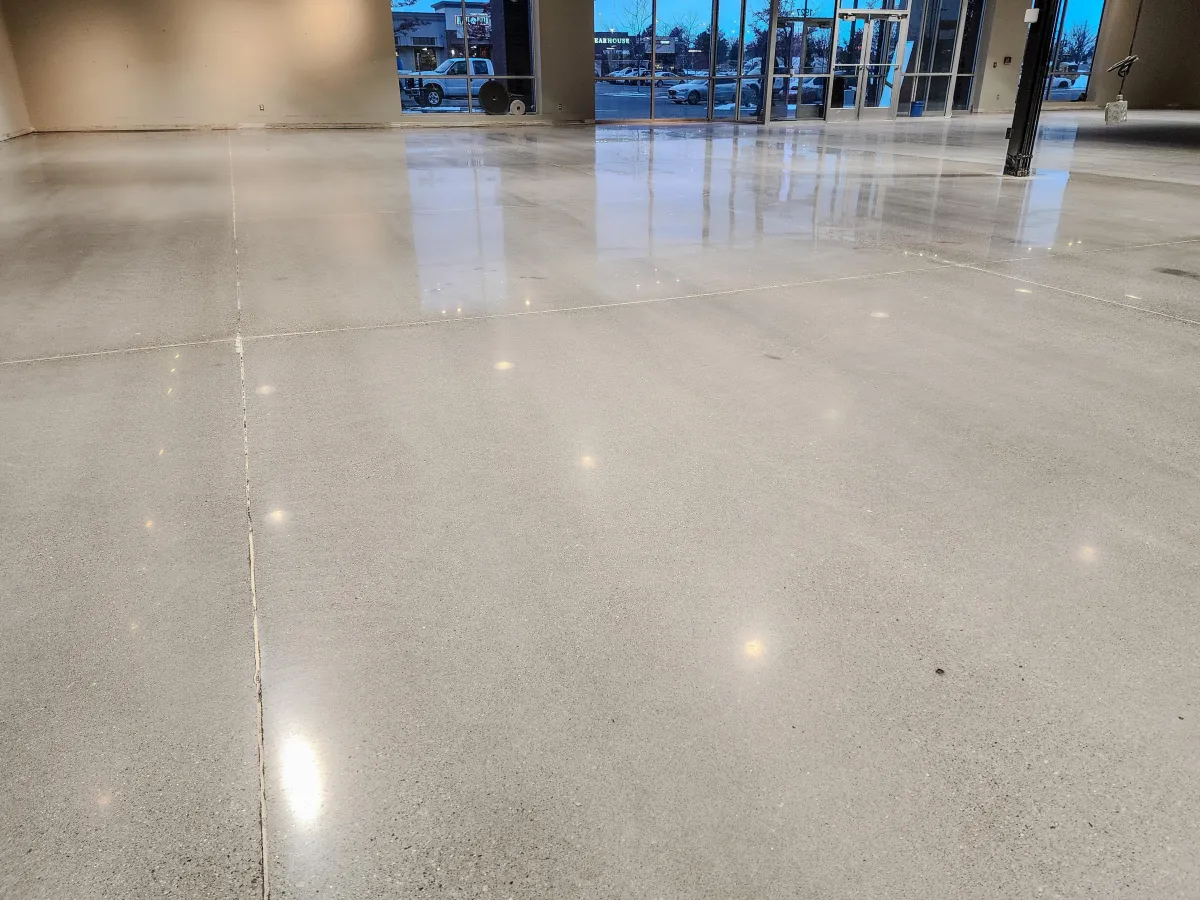
How is polished concrete different from a regular concrete floor?
Polished concrete undergoes a multi-step grinding, honing, and polishing process that smooths and densifies the concrete surface. A normal, untreated slab might be coarse, dusty, or prone to small imperfections. Polished concrete transforms that slab into a sleek, reflective floor with increased hardness and reduced porosity. Densifiers are applied during polishing to improve resistance to wear and dusting, and the final finish can range from a low sheen to a high-gloss, mirror-like surface. This comprehensive procedure not only enhances aesthetics but also strengthens the top layer, making the floor more durable and less prone to damage.
What are the benefits of polished concrete in residential settings?
Many homeowners appreciate polished concrete for its modern aesthetic and easy maintenance. It’s also allergen-friendly since it doesn’t trap dust mites or pet dander. In warm climates, the floor’s thermal mass can help keep interiors cooler, and it’s compatible with radiant heating systems in cooler regions. Polished concrete is also resistant to most stains if quickly addressed, making it suitable for kitchens, living areas, and open-concept floor plans. Plus, because you’re using the existing slab rather than installing a new material, it’s often more cost-effective and eco-friendly.
Is polished concrete slippery?
Polished concrete can appear slick due to its reflective nature, but in most dry indoor settings, it’s not significantly more slippery than other smooth floors like tile. If moisture is a concern (e.g., around entryways or bathrooms), or if the space will be used by people with mobility challenges, you can opt for slip-resistant sealers or micro-etching techniques to create a subtle texture. Regular cleaning to remove spills or dust helps maintain traction. In commercial settings, additional anti-slip treatments may be applied if safety protocols require it.
How do I maintain polished concrete floors?
Polished concrete is known for its easy maintenance. Generally, regular dry mopping or sweeping removes dirt and grit. For routine cleaning, use a neutral-pH floor cleaner mixed with water and a microfiber mop. Avoid acidic or abrasive cleaners that could dull the finish. Re-applying a protective sealer or burnishing the floor every 1–2 years (depending on traffic) can help restore the shine and preserve the polished surface. Implementing walk-off mats at entrances also helps capture dirt and debris before it reaches the polished floor.
Can any concrete slab be polished, or does it require special conditions?
Most structurally sound concrete slabs can be polished; however, slab condition is important. Cracks, spalling (surface flaking), or significant unevenness might need patching or leveling before polishing. The age of the slab isn’t necessarily a problem as long as it’s stable and has cured properly. If the concrete is excessively soft or has been heavily damaged by chemicals, an assessment is needed to determine if a densifier or specialized repair is required. In some cases, the slab may need to be resurfaced before polishing to achieve the desired aesthetic and performance.
How do I decide on the level of polish or sheen I want?
Most structurally sound concrete slabs can be polished; however, slab condition is important. Cracks, spalling (surface flaking), or significant unevenness might need patching or leveling before polishing. The age of the slab isn’t necessarily a problem as long as it’s stable and has cured properly. If the concrete is excessively soft or has been heavily damaged by chemicals, an assessment is needed to determine if a densifier or specialized repair is required. In some cases, the slab may need to be resurfaced before polishing to achieve the desired aesthetic and performance.
Can I add color or decorative elements to polished concrete?
Yes. There are several ways to customize polished concrete with dyes, stains, or tinted sealers. Acid staining reacts with minerals in the concrete to create a variegated, organic pattern, while water-based dyes can produce more uniform or vibrant hues. You can also incorporate decorative saw cuts or stencils to create patterns or logos. Many commercial customers use branding or unique designs to make an impression on guests and clients. Be aware that existing concrete color variations or aggregate exposure will influence the final result, so proper testing and samples are recommended.
Will polished concrete crack over time?
Concrete can develop hairline cracks due to natural settling or changes in temperature, regardless of whether it’s polished. However, once polished and densified, the top layer is strengthened, helping to minimize new cracking. If cracks do appear, they’re often purely cosmetic and can sometimes blend into the natural stone-like look of polished concrete. If structural issues cause larger cracks, a professional can fill or repair them with materials designed to match or complement the floor’s finish. Regular inspection and maintenance ensure minor cracks don’t evolve into larger problems.
How long does the polishing process take, and when can I use the floor?
The timeline for polishing depends on factors such as floor size, desired level of polish, condition of the concrete, and how many densifier or stain steps are included. Smaller residential projects may be finished within a few days, while larger commercial floors can take a week or more. Once the final coat and burnishing are complete, the floor can usually handle light foot traffic immediately. Heavy equipment or furniture placement might require a short waiting period—typically 24 to 72 hours—to ensure the floor has fully cured and hardened.
How does polished concrete compare to other flooring options in terms of cost?
Polished concrete is often considered a cost-effective choice, particularly if you have a suitable existing slab. You’re effectively leveraging what’s already there, eliminating the cost of additional materials like tile, vinyl, or hardwood. Initial installation costs can vary based on factors like the slab’s condition, needed repairs, or design complexity (such as multiple stains or patterns). Over the long term, polished concrete’s minimal maintenance and durable finish can result in significant savings compared to options that require periodic replacement or high upkeep (e.g., carpet, vinyl). Overall, it strikes an excellent balance between budget, design flexibility, and longevity.
CONCRETE RESURFACING
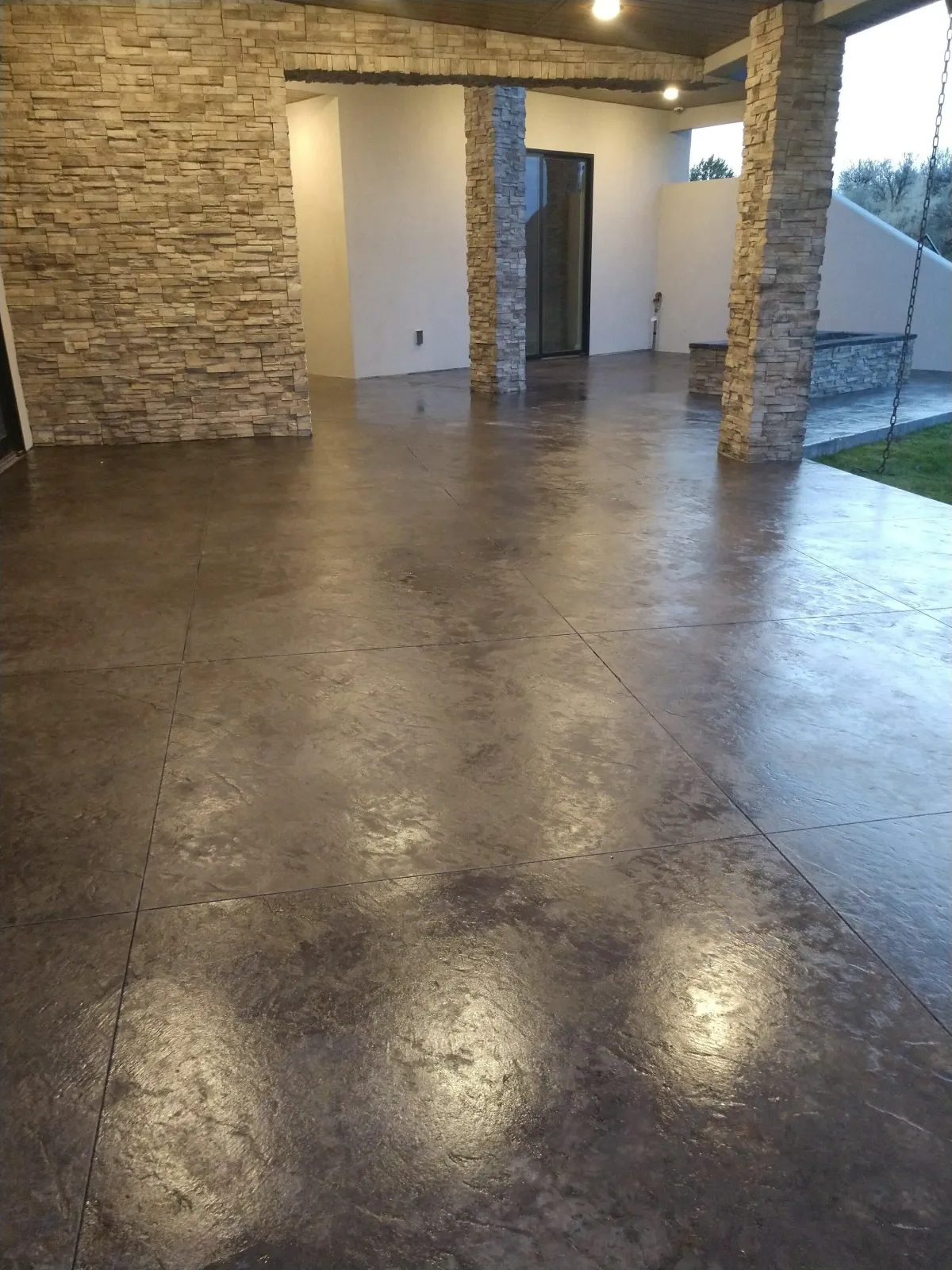
Revitalize Aging or Damaged Concrete
Don’t replace it—resurface it. Our concrete resurfacing process breathes new life into worn-out patios, driveways, and walkways. By applying a durable overlay, we can repair minor damage and give surfaces a fresh, updated look without the expense of a full tear-out.
Why You Want It
Saves Money:
More affordable than tearing out and pouring new concrete
Fresh Look Without Demolition:
Revamp driveways, patios, and walkways without a total overhaul
Extended Concrete Lifespan:
Repairs minor damage and prevents further deterioration
Faster, Less Disruptive:
Quick turnaround means minimal downtime for you.
What exactly is concrete resurfacing?
Concrete resurfacing is the process of applying a thin, durable overlay on top of existing concrete to hide imperfections, minor cracks, and surface damage. Unlike a full replacement—where you’d tear out the existing slab—resurfacing retains the slab’s structural integrity while giving it a fresh face. Overlays can be decorative, offering various finishes and colors, or purely functional to restore a uniform, smooth surface. This approach is both cost-effective and less disruptive than starting from scratch, making it popular for driveways, patios, sidewalks, and commercial floors that have lost their luster.
When should I opt for resurfacing rather than replacing my concrete?
Choose resurfacing if your concrete is generally stable and free from severe structural issues, such as deep cracks, major heaving, or sinkholes. Superficial damage like surface flaking, minor pitting, or small cracks is ideal for resurfacing treatments. If your slab is significantly compromised or heavily damaged, complete replacement may be safer. However, a qualified professional can assess whether a combination of targeted repairs and resurfacing will suffice. In many cases, resurfacing is far more affordable and quicker than demolishing and repouring an entirely new slab.
How durable is a resurfaced concrete overlay?
Modern resurfacing materials are engineered to be highly durable and bond strongly to existing concrete. Many overlays include polymers or other additives that enhance flexibility, adhesion, and resistance to weathering. Proper surface preparation—cleaning, repairing cracks, and possibly roughening the surface for better adhesion—is crucial. When done correctly, a resurfaced concrete surface can last 10–15 years or longer with routine maintenance (like resealing and cleaning). This makes it a strong candidate for areas with moderate foot or vehicle traffic, such as driveways and walkways.
Can resurfacing be decorative, or is it purely functional?
It can definitely be decorative. You can add color, use stencils, or create stamped patterns that mimic natural stone, brick, or tile. Some homeowners even opt for intricate designs or geometric patterns to match their personal style. Finishes can range from a smooth, polished look to a textured, slip-resistant surface. This aesthetic flexibility is part of what makes resurfacing appealing: you’re essentially “renewing” the concrete both structurally and visually without the high costs of laying entirely new materials.
How long does concrete resurfacing take, and what is the downtime?
The timeline depends on surface preparation, size of the area, and weather conditions if it’s outdoors. Generally, small residential projects (like a driveway) might be completed within 1–3 days. Larger commercial jobs could extend to a week or more. The overlay itself usually cures within 24 hours for light foot traffic, but it’s best to wait 2–3 days before resuming normal use (and potentially up to a week for vehicle traffic). Ambient temperature, humidity, and the specific product used can also affect cure times. Proper curing ensures a strong bond and a smooth finish.
Does resurfacing fix structural issues like major cracks or sinking?
Concrete resurfacing is mainly a cosmetic and superficial repair. While it can cover minor cracks or spalling, it won’t address underlying structural problems like severe settling or large voids beneath the slab. If you have significant structural issues—such as deep cracks through the slab or areas of major sinking—those need repair first, possibly with mudjacking, foam injection, or other specialized solutions. It’s crucial to address these root causes before applying an overlay; otherwise, the damage will likely reappear, and the overlay could fail prematurely.
Is resurfaced concrete slippery, especially when wet?
Some standard resurfacing products can be smooth, but most installers offer anti-slip additives or textures (like a broom finish or stamped pattern) to ensure adequate traction. If slip resistance is a concern—particularly in areas prone to water, such as pool decks or walkways—it’s best to discuss texturing options. Regularly cleaning and resealing the surface also helps maintain traction. Sealing products come in various sheens, including matte finishes that reduce slipperiness while still protecting the concrete.
How do I maintain a resurfaced concrete surface?
Maintenance is relatively simple. Regular sweeping or hosing off dirt and debris prevents gritty buildup that can cause wear. Occasional cleaning with a mild detergent or a specialized concrete cleaner helps remove stains. Resealing every 1–3 years (depending on foot/vehicle traffic and climate) preserves the surface’s finish, color, and protective qualities. Avoid using harsh chemicals or salts in cold climates, as they can degrade the sealant. Promptly cleaning up spills—especially oil or grease—helps prevent permanent staining.
Can I resurface my concrete myself, or should I hire a professional?
While DIY kits exist, professional resurfacing is recommended for long-lasting, high-quality results. Surface preparation alone can be challenging, as it often requires power washing, crack repair, and possibly mechanical grinding. A professional will also know how to mix and apply the overlay for uniform thickness, proper bonding, and a smooth finish. Missteps in preparation or application can lead to peeling, cracking, or uneven results, forcing costly rework later. If you’re not confident in your skill set or the necessary equipment, hiring a qualified contractor is the safer, more effective route.
How does resurfacing compare to replacing or other flooring options?
Resurfacing is faster, more affordable, and less disruptive than fully replacing concrete. It also allows for extensive customization with colors, stamps, and patterns. In contrast, replacing the slab involves demolition, hauling away debris, and pouring new concrete—an expensive and time-consuming process. Compared to other flooring options like pavers or tile, resurfacing can be more cost-effective and often yields a more uniform look. Ultimately, resurfacing excels when the underlying concrete is structurally sound but needs a facelift, saving you both money and downtime.
CONCRETE SEALING
Safeguard & Preserve Your Concrete
Concrete sealing is a simple yet highly effective way to guard against moisture, stains, and surface wear. After meticulously cleaning and prepping your concrete, we apply a high-quality sealant that extends its lifespan and maintains a fresh appearance.
Why You Want It
Protection from Moisture:
Sealing helps prevent cracks and freeze-thaw damage.
Stain Resistance:
Repels oil, dirt, and other spills for easier upkeep.
Enhanced Appearance:
A subtle sheen creates a fresher, more polished look.
Weather Durability:
Stands up better to temperature extremes and daily wear.
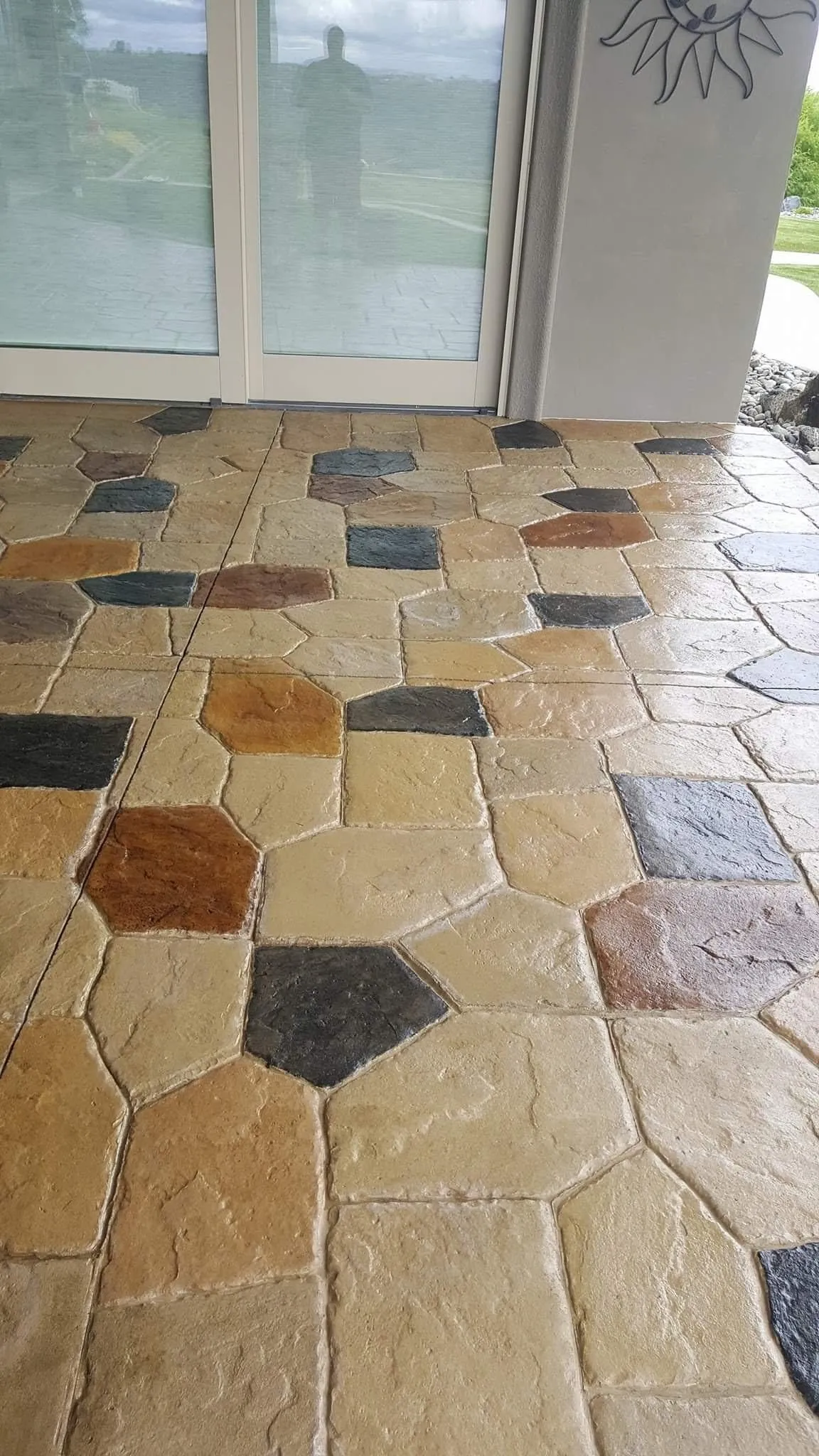
Why is concrete sealing important?
Concrete is naturally porous, which means it can absorb water, chemicals, and stains. Sealing creates a protective layer that blocks or slows this absorption, helping to prevent cracks, spalling, discoloration, and freeze-thaw damage. It also makes routine cleaning simpler, since spills and debris remain on the surface rather than seeping into the concrete. In essence, sealing is a relatively quick, cost-effective step that can significantly extend your concrete’s lifespan and preserve its appearance.
What types of sealers are available, and which is best for my project?
There are many varieties, primarily categorized as penetrating sealers or film-forming sealers. Penetrating sealers (like silanes, siloxanes, or siliconates) soak into the concrete, creating an invisible barrier that repels water and contaminants. Film-forming sealers (acrylics, polyurethanes, epoxies) sit on the surface, offering a protective coating that can add gloss or sheen. The right sealer depends on factors like exposure to the elements, desired appearance (matte vs. glossy), and the level of traffic or abrasion. A professional can recommend a product that best suits your goals—whether it’s subtle protection or a decorative, high-gloss finish.
How often should concrete be resealed?
The resealing frequency depends on sealer type, traffic level, and environmental conditions. Penetrating sealers can last several years, while film-forming sealers may need more frequent touch-ups, especially in high-traffic or harsh weather conditions. Outdoor surfaces in cold climates (where freeze-thaw cycles are common) may need resealing every 2–3 years, whereas a lightly used indoor floor might go 3–5 years before reapplication. Inspecting the surface for signs of wear, such as color fading or water no longer “beading up,” helps determine the best time to reseal.
Can I seal new concrete right away, or do I need to wait?
Most experts recommend waiting at least 28 days for fresh concrete to cure properly. Applying a film-forming sealer too soon can trap excess moisture, leading to issues like surface haze or weaker adhesion. However, certain curing compounds or cure-and-seal products are formulated to allow moisture vapor transmission while still offering a measure of protection. Ultimately, following the concrete manufacturer’s guidelines and the sealer’s instructions ensures the best results.
Will sealing change the appearance of my concrete?
That depends on the type of sealer used. Penetrating sealers often leave the concrete looking nearly the same, maintaining its natural finish. Film-forming sealers can add a slight sheen or a full glossy “wet look.” Some sealers can even deepen the color of decorative or stained concrete, creating a richer tone. If you want a specific aesthetic effect, discuss your preference with your contractor. They can provide examples or test a small patch to ensure it matches your expectations.
Does sealing help prevent salt or chemical damage?
Yes, salt and de-icing chemicals can degrade unsealed concrete by accelerating freeze-thaw cycles and corroding the surface. A quality sealer serves as a shield against these substances, slowing down or preventing the penetration that leads to cracks and spalling. However, it’s still prudent to use de-icing products labeled as “concrete-safe” whenever possible, and promptly rinse any chemicals to further prolong the life of your sealed concrete.
How long does the sealing process take, and what is the curing time?
Depending on surface size, surface preparation, and product type, the process can usually be done in one day or two for most residential patios, driveways, or sidewalks. After pressure washing and letting the surface dry, the sealer is applied (often with a sprayer or roller). Drying times vary, but many sealers are dry to the touch within a few hours. For heavy foot traffic or placing furniture, wait 24 to 48 hours. Vehicle traffic (for driveways) might require 72 hours or more. Always review the product’s guidelines for specific recommendations.
Can I seal concrete myself, or should I hire a professional?
DIY sealing projects are possible, especially for smaller areas or simpler applications. However, surface preparation (cleaning, repairing cracks, ensuring a consistent dryness) is critical for success. Choosing the right sealer for your concrete type and environment also requires knowledge of products. Professionals have the expertise and equipment (e.g., industrial pressure washers, commercial-grade sealers, sprayers) to achieve more consistent coverage and longevity. Mistakes—such as over-application or using the wrong sealer—can lead to issues like peeling, uneven sheen, or premature failure, so many homeowners find value in hiring a qualified contractor.
Is sealing concrete environmentally friendly?
Sealing can be environmentally responsible when using water-based or low-VOC sealers. These formulations minimize the release of harmful compounds into the air. Additionally, by extending the life of concrete, sealing can reduce the need for frequent repairs or replacements, which saves resources and energy over time. If environmental impact is a concern, ask about green-certified products or water-based sealers that meet strict environmental standards.
Does sealing fix cracks or other concrete damage?
Sealing primarily protects the surface. It won’t inherently fix existing cracks or address underlying structural issues. Before sealing, any noticeable cracks or damage should be repaired with compatible patching materials or fillers. Once repairs are complete and cured, the sealer can be applied to lock out moisture and contaminants, helping prevent further deterioration. Skipping these repairs can lead to water infiltration and worsening damage beneath the sealer, so proper prep work is essential.
CONCRETE RESTORATION

Repair & Rejuvenate Your Concrete
Over time, concrete can develop cracks, pits, and uneven surfaces. Our concrete restoration services address these issues directly, making repairs, filling gaps, and renewing finishes. The result is stronger, safer, and more visually appealing concrete for years to come.
Why You Want It
Faster & Cheaper Than Replacing:
Restoration often takes less time and money than a complete tear-out.
Improved Safety:
Eliminates tripping hazards and stabilizes worn-out concrete.
Updated Look:
Revitalize tired, damaged concrete for a more attractive space.
Long-Term Confidence:
Renew your concrete’s strength and durability for years to come.
What does concrete restoration involve?
Concrete restoration is the process of repairing, resurfacing, or otherwise rejuvenating an existing concrete slab. It can include patching cracks, filling in spalled areas, leveling uneven surfaces, and applying finishing treatments that restore or enhance the concrete’s appearance. Restoration aims to extend the functional life of the concrete while also improving safety and aesthetics. Depending on the condition, restoration might involve smaller spot repairs or more extensive processes like overlays, grinding, or re-coating.
How do I know if my concrete needs restoration or total replacement?
Generally, restoration is suitable if the concrete is structurally sound and the problems are mostly surface-level (like cracks, staining, or minor pitting). If the slab has severe structural issues—such as deep cracks running through the entire thickness, substantial heaving, or major sinking—replacement might be necessary. The best way to decide is to have a professional inspection. They can recommend a restoration plan that addresses problem areas while preserving as much of the original slab as possible.
What types of damage can concrete restoration address?
Modern resurfacing materials are engineered to be highly durable and bond strongly to existing concrete. Many overlays include polymers or other additives that enhance flexibility, adhesion, and resistance to weathering. Proper surface preparation—cleaning, repairing cracks, and possibly roughening the surface for better adhesion—is crucial. When done correctly, a resurfaced concrete surface can last 10–15 years or longer with routine maintenance (like resealing and cleaning). This makes it a strong candidate for areas with moderate foot or vehicle traffic, such as driveways and walkways.
How do you repair cracks during restoration?
Crack repair depends on crack size, depth, and cause. For hairline cracks, a polymer resin or epoxy injection is often used, penetrating the crack and bonding the concrete back together. Larger cracks may require routing (widening the crack slightly to create a clean channel) before filling with a high-strength repair product. After curing, the repair might be ground flush with the surrounding surface for a uniform appearance. The key is to address why the crack formed—such as poor drainage or underlying soil movement—so it doesn’t reappear.
How long does concrete restoration typically last?
A well-executed restoration can extend the life of concrete by another 10 to 20 years or more, depending on local climate, usage, and maintenance. The quality of the materials and the skill of the installer play significant roles, as does regular upkeep (like sealing, cleaning, or addressing new cracks promptly). While restoration doesn’t make your slab brand-new, it can greatly enhance its durability and appearance, delaying the need for total replacement.
Can I add decorative finishes during restoration?
Absolutely. Many property owners take advantage of restoration to upgrade their concrete’s appearance—whether it’s stamping, staining, decorative overlays, or epoxy coatings. For instance, after repairing damage, you could opt for a stamped overlay that mimics stone or brick. If you want a polished look, the slab can be ground, polished, and densified. Or, you might choose decorative epoxy in a garage or commercial space. Restoration provides the perfect window to incorporate both structural fixes and an aesthetic boost.
Is restoration messy or disruptive?
While there is some dust and noise associated with processes like grinding, most professional contractors use dust-collection systems and protective barriers to minimize mess and contamination. The disruption is typically far less than a full replacement, which involves demolishing and hauling away the old slab, forming, and pouring new concrete. Restoration can often be completed in a few days for residential projects, compared to weeks for a full tear-out and repour. Proper site prep and communication with your contractor help ensure the process is as hassle-free as possible.
What is the cost difference between restoration and replacement?
Restoration is usually more affordable than complete replacement because you’re using the existing slab as the foundation. Replacement involves demolition, removal, new materials, and additional labor for re-forming, pouring, and curing the slab. While exact numbers vary by region, project size, and extent of damage, restoration can often save 30%–50% (or more) compared to full replacement. Additionally, the reduced downtime and disruption can be beneficial if you rely on the space for daily activities.
How do I maintain restored concrete?
Maintenance is similar to routine concrete care: regular sweeping or mopping, avoiding harsh chemicals, and periodically resealing the surface if a sealer or coating was applied. Promptly clean spills—especially oils or chemicals—to prevent staining. If you notice any new cracks forming or old cracks reappearing, address them quickly before they worsen. For decorative finishes, use cleaning products designed specifically for stained, coated, or polished surfaces to avoid dulling or etching the finish.
Can restoration solve drainage issues, like water pooling on concrete surfaces?
If the original slab was poured with improper slope or has since settled, water may pool, leading to potential damage. Restoration can address moderate grading issues with a self-leveling overlay or patching compounds to even out low spots. However, severe drainage problems might require additional work, such as re-grading the surrounding soil, installing drainage channels, or in extreme cases, re-pouring sections of the slab. It’s best to consult with a contractor who can evaluate the cause of pooling and recommend a tailored solution.
JANITORIAL SERVICES
Professional Cleaning for Pristine Spaces
A clean environment sets the tone for comfort and productivity. Our janitorial team provides routine and deep-cleaning solutions tailored to your facility’s needs—whether you manage an office, retail store, or industrial site.
Why You Want It
Positive First Impressions:
Spotless facilities reassure clients, guests, and staff alike.
Deeper Clean:
Industrial-grade equipment and trained staff achieve a level of cleanliness hard to match with DIY methods.
Health & Hygiene:
A professionally cleaned environment promotes better well-being for everyone.
Prolonged Floor Life:
Regular cleaning prevents excessive wear on floors, carpets, and furnishings.
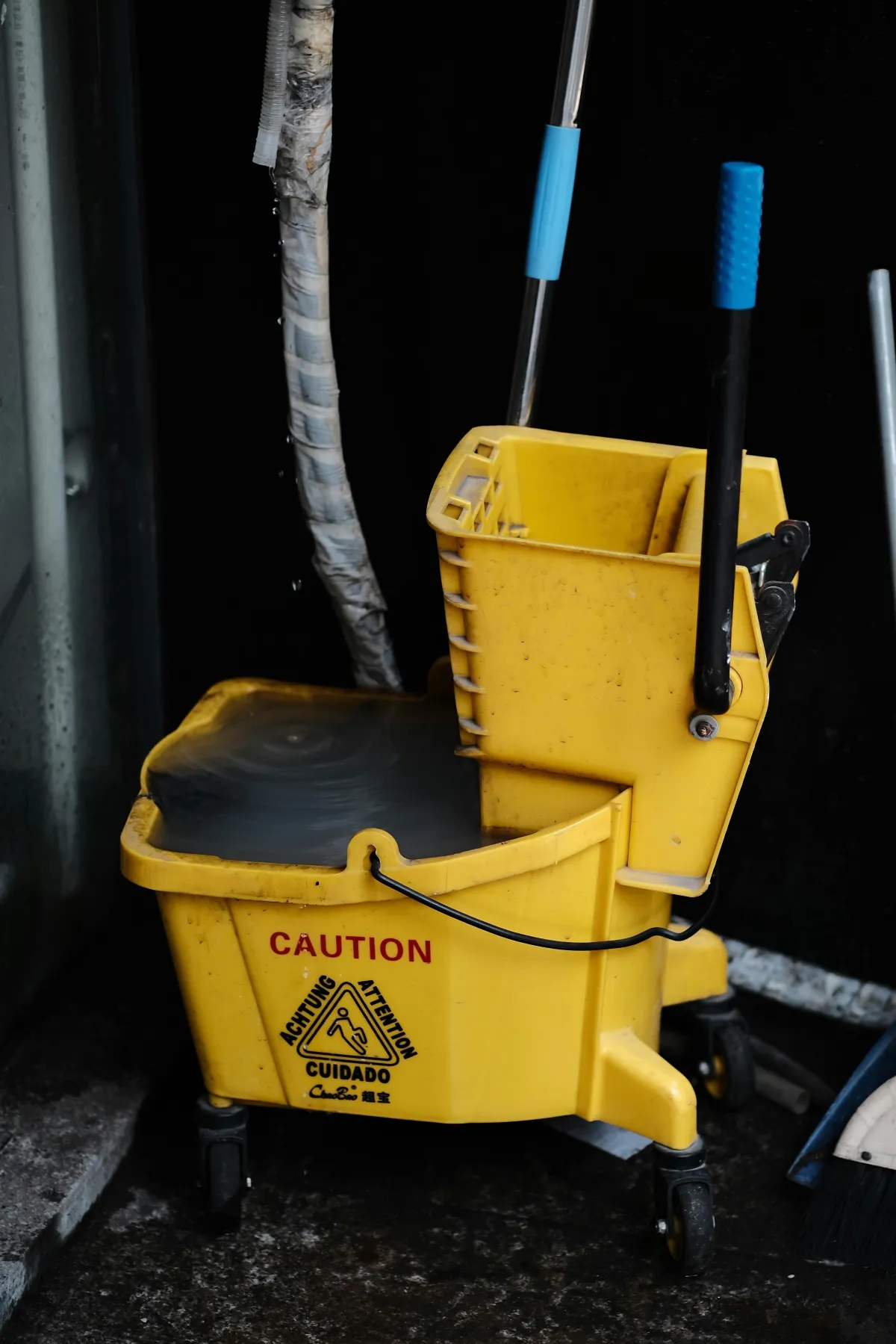
What types of facilities can benefit from your janitorial services?
Our janitorial services cater to a wide range of facilities: office buildings, retail stores, industrial sites, schools, medical facilities, and more. Any business that needs regular cleaning—vacuuming, mopping, disinfecting surfaces, trash removal—can benefit. We customize our approach based on factors like foot traffic, type of activities, and specialized requirements (e.g., healthcare sanitation). Whether you manage a small boutique or a large corporate office, having a professional janitorial team helps maintain a clean, welcoming environment that reflects positively on your brand.
How do you ensure high-quality cleaning standards?
We employ trained, experienced cleaners who follow standardized protocols and checklists tailored to each client. For example, tasks might range from routine vacuuming and dusting to more specialized processes like floor buffing or sanitizing high-touch areas. Supervisors perform regular quality checks to confirm the work meets our standards. Additionally, ongoing staff training ensures our team is current on best practices, safety guidelines, and new cleaning technologies. If you have specific concerns or requests, we incorporate them into your cleaning plan to ensure total satisfaction.
Do you offer eco-friendly or green cleaning options?
Yes, many businesses and property owners now prioritize environmentally friendly or low-chemical cleaning solutions. We’re happy to use green cleaning products that are free from harsh chemicals and certified by reputable organizations (e.g., Green Seal). We also focus on waste reduction by using microfiber cloths, which cut down on disposable paper products, and by properly diluting cleaning concentrates. If sustainability is a priority, let us know—we’ll tailor our service to align with your eco-friendly commitments.
Can you accommodate after-hours or weekend cleaning?
Absolutely. We understand that it’s often more convenient—and less disruptive—for clients if cleaning is done outside of standard operating hours. We can arrange for our janitorial team to visit after business hours, during evenings, or even on weekends. This scheduling flexibility helps ensure that customers, employees, or visitors aren’t disturbed by the cleaning process. We work collaboratively to find a timetable that fits your workflow and budget.
How frequently should my facility be cleaned?
Cleaning frequency depends on factors like foot traffic, type of business, and local health regulations. Offices may opt for daily trash removal and weekly deep-cleaning of floors. Retail stores with significant customer flow might need daily sweeping, mopping, and restroom cleaning. Medical facilities often require stringent daily disinfecting. We typically start with an initial consultation to evaluate your space, then recommend a schedule—daily, weekly, bi-weekly, or monthly. We can also include periodic deep-cleans or special projects (like carpet shampooing) in your contract.
Do you provide specialized floor care as part of janitorial services?
Yes. Our janitorial team can handle various floor care tasks—including vacuuming, sweeping, mopping, buffing, and waxing—depending on your flooring type (tile, vinyl, hardwood, etc.). For more advanced needs like polished concrete maintenance or epoxy floor refinishing, our specialized floor care division can assist. Regular floor maintenance not only keeps surfaces looking clean and professional but also extends their lifespan by protecting against wear and tear.
Are your cleaners insured and background checked?
Yes, we maintain comprehensive liability insurance and adhere to strict hiring practices that include background checks. Our goal is to provide reliable, trustworthy cleaners who respect your property and operate with professionalism. We recognize that you’re entrusting us with your facility, so we take every measure to ensure our team meets the highest standards of conduct and reliability.
What if I have an emergency cleaning situation or need additional services on short notice?
We understand that unexpected spills, accidents, or special events can arise. Our clients can contact us to arrange extra cleaning services at short notice. Depending on the nature of the situation, we’ll dispatch a team as quickly as possible to address the issue—whether it’s a flood cleanup, a major spill, or post-event tidying. We believe in being flexible and responsive to help minimize disruptions and maintain a clean, safe environment.
How do I communicate changes or special instructions to the cleaning crew?
We encourage open communication. We typically assign a point of contact for each client—either an account manager or a lead supervisor—so you can relay any updates or special requests. This can be done via email, phone, or an online portal if provided. If you need something addressed before the next scheduled cleaning, or you want to modify your service plan, just let us know. Clear communication helps us tailor our services to your evolving needs.
Can janitorial services help with overall workplace safety and compliance?
Absolutely. A well-maintained facility is less likely to have slip-and-fall hazards or sanitation issues that violate health codes. Regular cleaning reduces clutter, helping prevent accidents and providing a healthier work environment. In certain sectors—like food service or healthcare—routine disinfecting is critical for meeting local and federal guidelines. Our team is trained to handle these requirements, ensuring that your facility remains both compliant and conducive to employee well-being and customer satisfaction.
Schedule a Free Consultation
Not sure which flooring solution suits your space or lifestyle?
No problem! At Orr Floor Care, we recognize that choosing the right floor can feel overwhelming—especially when you’re unaware of all the possibilities. That’s why we offer
free consultations to help you explore your options, compare costs, and find the perfect balance between function and style.
During this no-obligation appointment, our knowledgeable team will evaluate your specific needs
—whether that’s handling heavy traffic, resisting moisture, or achieving a one-of-a-kind decorative look. We’ll
walk you through customization options you may not even know exist, from eye-catching color blends to slip-resistant finishes.
Our aim is to provide professional guidance so you feel confident selecting a floor that complements both your design vision and practical requirements.
Ready to get started?
Contact Orr Floor Care today to book your free consultation and discover how our expertise can transform your space with a floor that’s tailor-made for you.
LET'S WORK TOGETHER

STEP ONE
Tell us about
your project
Fill out our contact form below
and tell us about your project.

STEP TWO
We Contact You
To Learn More
We will contact you to learn more about your project and answer any questions you may have. Then we will prepare a quote for you.

STEP THREE
Work with a
reliable contractor
Enjoy the peace of mind that comes from working with Orr Floor Care

